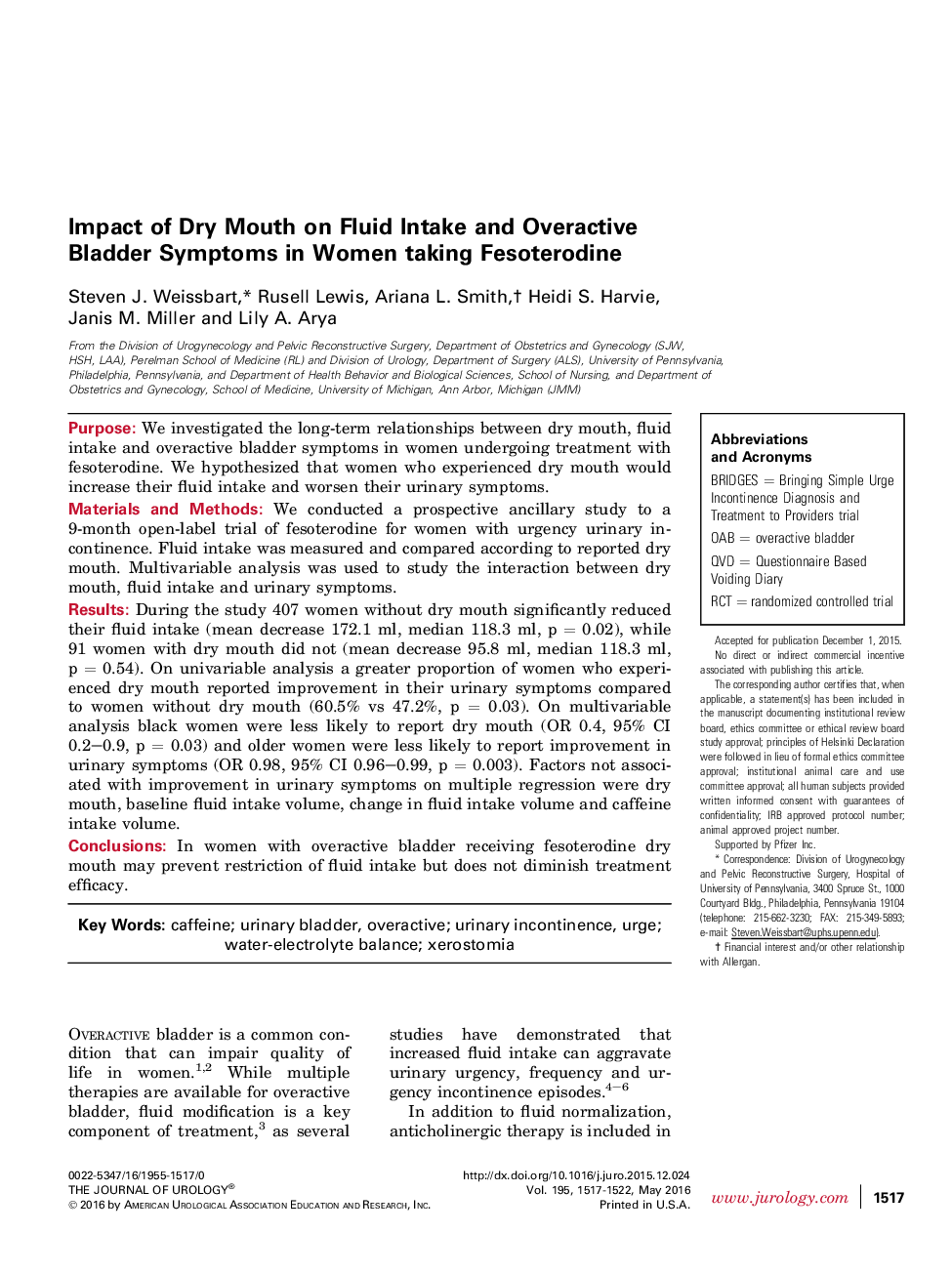| کد مقاله | کد نشریه | سال انتشار | مقاله انگلیسی | نسخه تمام متن |
|---|---|---|---|---|
| 3858999 | 1598876 | 2016 | 6 صفحه PDF | دانلود رایگان |
PurposeWe investigated the long-term relationships between dry mouth, fluid intake and overactive bladder symptoms in women undergoing treatment with fesoterodine. We hypothesized that women who experienced dry mouth would increase their fluid intake and worsen their urinary symptoms.Materials and MethodsWe conducted a prospective ancillary study to a 9-month open-label trial of fesoterodine for women with urgency urinary incontinence. Fluid intake was measured and compared according to reported dry mouth. Multivariable analysis was used to study the interaction between dry mouth, fluid intake and urinary symptoms.ResultsDuring the study 407 women without dry mouth significantly reduced their fluid intake (mean decrease 172.1 ml, median 118.3 ml, p = 0.02), while 91 women with dry mouth did not (mean decrease 95.8 ml, median 118.3 ml, p = 0.54). On univariable analysis a greater proportion of women who experienced dry mouth reported improvement in their urinary symptoms compared to women without dry mouth (60.5% vs 47.2%, p = 0.03). On multivariable analysis black women were less likely to report dry mouth (OR 0.4, 95% CI 0.2–0.9, p = 0.03) and older women were less likely to report improvement in urinary symptoms (OR 0.98, 95% CI 0.96–0.99, p = 0.003). Factors not associated with improvement in urinary symptoms on multiple regression were dry mouth, baseline fluid intake volume, change in fluid intake volume and caffeine intake volume.ConclusionsIn women with overactive bladder receiving fesoterodine dry mouth may prevent restriction of fluid intake but does not diminish treatment efficacy.
Journal: The Journal of Urology - Volume 195, Issue 5, May 2016, Pages 1517–1522
